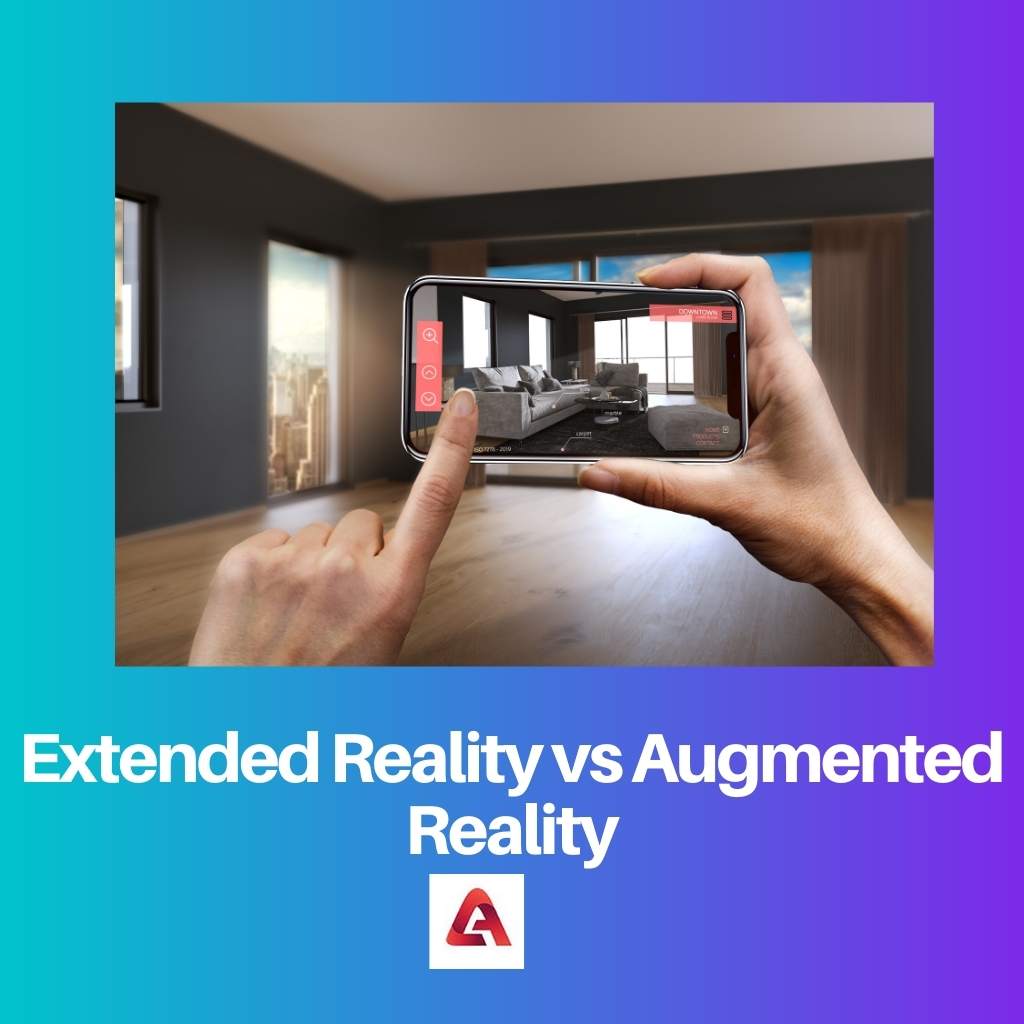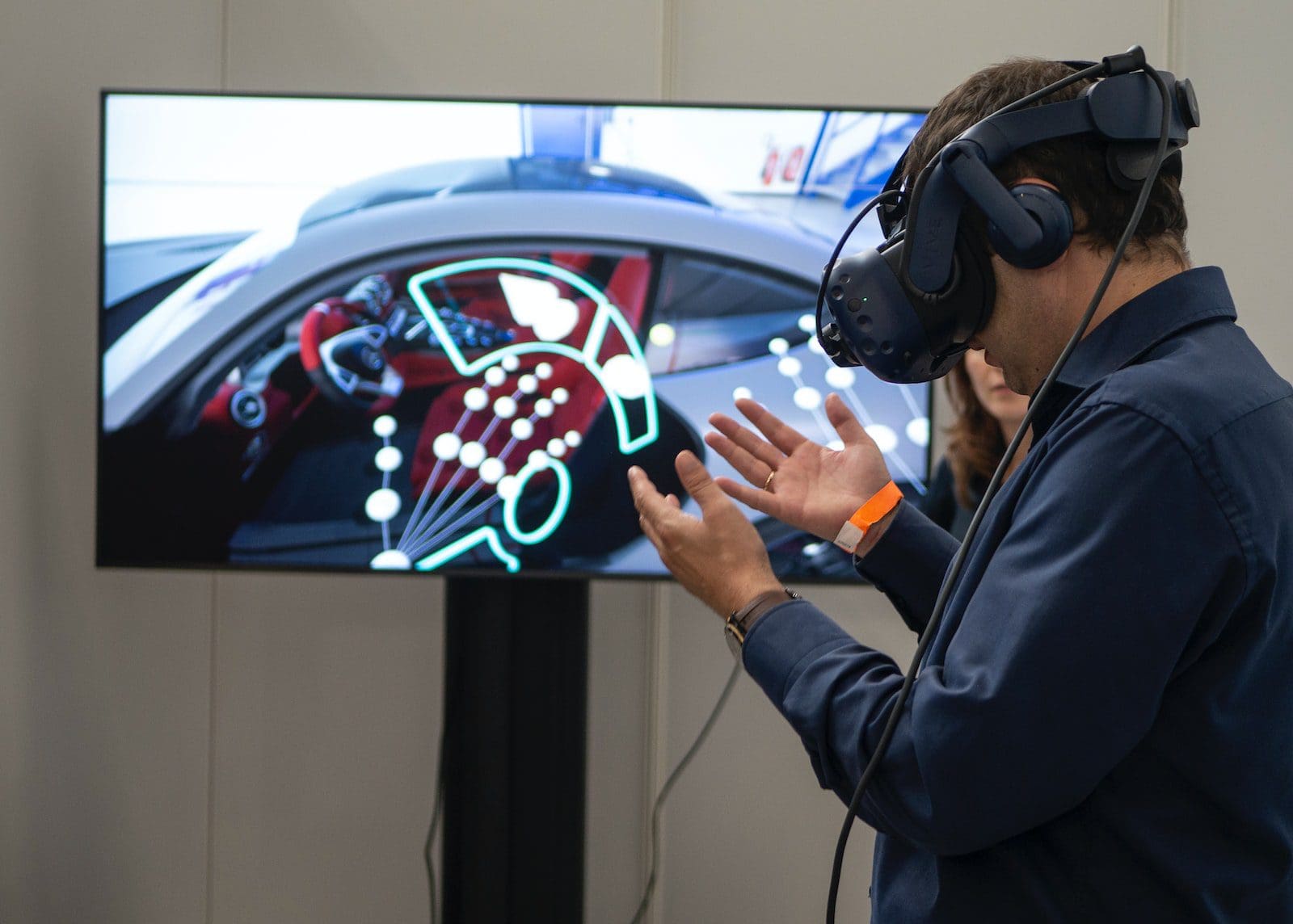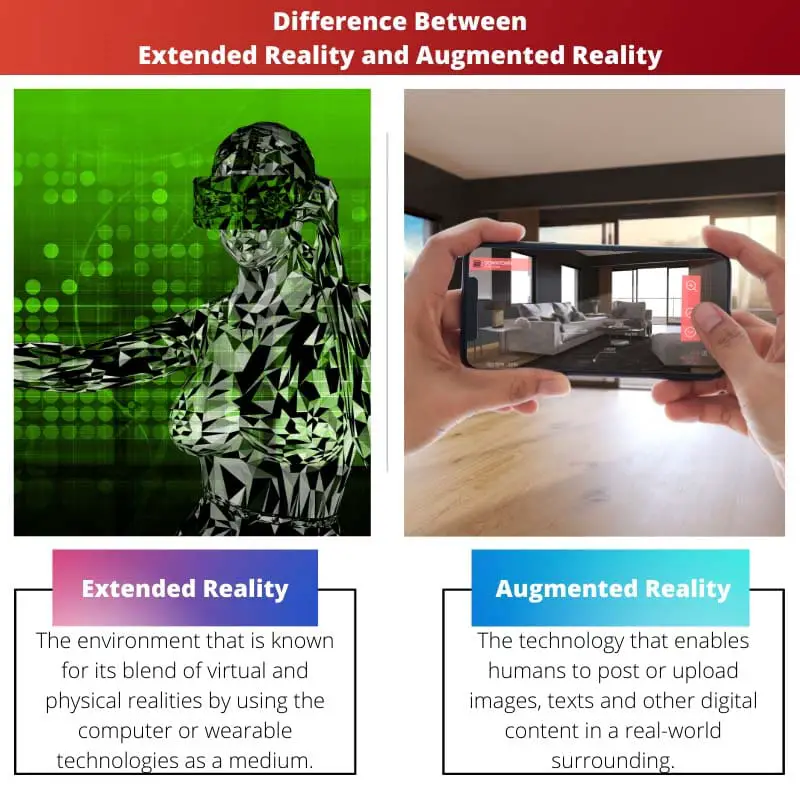We live in a world where technology is rapidly growing and is becoming advanced. This growing technology makes us humans more accessible to the resources that we require to complete our daily rigmarole.
These several technologies include 1. Extended Reality or XR, and 2. Augmented Reality or AR. These two concepts have their independent notions and implication.
Key Takeaways
- Extended reality is a term that encompasses a range of technologies, including augmented reality, virtual reality, and mixed reality. In contrast, augmented reality is a specific technology that overlays digital content in the real world.
- Extended reality is used for entertainment and gaming, as well as for training and education. In contrast, augmented reality is increasingly used in various industries, including healthcare, retail, and manufacturing.
- Extended reality has the potential to transform how we interact with the digital world, while augmented reality is already being used to enhance the way we experience the real world.
Extended Reality vs Augmented Reality
The difference between Extended reality and Augmented reality is their meaning. The environment that is known for its blend of virtual and physical realities by using the computer or other technologies as a medium is known as Extended reality, on the other hand, the technology that enables humans to post or upload images, texts and other digital content in a real-world surrounding is known as the Augmented reality.

The environment that is known for its blend of virtual and physical realities by using computer or wearable technologies as a medium is known as Extended reality.
The technology that enables humans to post or upload images, texts and other digital content in real-world surroundings is known as Augmented reality.
Comparison Table
| Parameters of Comparison | Extended Reality | Augmented Reality |
|---|---|---|
| Meaning | The environment that is known for its blend of virtual and physical realities by using the computer or wearable technologies as a medium is known as Extended reality. | The technology that enables humans to post or upload images, texts and other digital content in a real-world surrounding is known as the Augmented reality. |
| Acronyms | XR | AR |
| Subtypes | Augmented Reality, Virtual Reality, Mixed Reality, 3D audio, human and machine interaction technologies. | Marker-based Augmented Reality, Markerless Augmented Reality, Location-based Augmented Reality, Superimposition Augmented Reality, Projection-based Augmented Reality, Outlining Augmented Reality. |
| Advantages | Can be used in many fields like real estate, marketing and advertising, architecture and construction, museums, logistics, health etc. | The user’s knowledge and information are increased. |
| Disadvantages | Prone to cyberattacks, social engagement is decreased, the implementation is costly. | Expensive, probably less accessible to some audience. |
What is Extended Reality?
The environment that is known for its blend of virtual and physical realities by using computer or wearable technologies as a medium is known as Extended reality.
There are several types of Extended reality. These several types have different meanings, applications, advantages and disadvantages.
Several extended reality applications are used in many fields, including real estate, marketing and advertising, architecture and construction, museums, logistics, health, etc.
The extended reality is one of the evolving technologies, and in the upcoming years, it is going to change and grow even more. The several types of extended reality are applied in several fields.

What is Augmented Reality?
The technology that enables humans to post or upload images, texts and other digital content in real-world surroundings is known as Augmented reality.
The three basic elements of Augmented Reality include a blend of both real and virtual worlds, an interaction that is real, and virtual and real objects that are demonstrated in 3D.
Several types of Augmented Reality include Marker-based Augmented Reality, Markerless Augmented Reality, Location-based Augmented Reality, Superimposition Augmented Reality, Projection-based Augmented Reality, Outlining Augmented Reality etc.
Several advantages of Augmented Reality include an increase in the user’s knowledge. The user is provided with information.

Main Differences Between Extended Reality and Augmented Reality
- The applications of extended reality include camera tracking in games and, thus, in the gaming industry, training of employees and consumers etc., on the other hand, the applications of augmented reality include reviewing and scanning images in the education field.
- Extended reality refers to interactions between humans and machines by computer technologies. On the other hand, augmented reality refers to imposing digital content on the real world that is created by computer technology.




